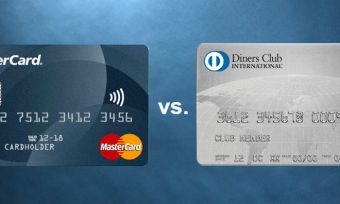Compare credit cards with purchase protection
Feel better knowing your credit card purchases are protected in the event of loss, theft or damage? The table below displays a selection of credit cards from our Online Partners that offer purchase protection insurance. Terms and conditions vary between cards and limits and exclusions apply.

Instantly compare 140+ credit cards based on the inputs below
Spend $4K within 3 months of approval date
T&Cs apply. New Card Members only.
Showing 10 of 70 results
Unsure of a term in the above table? View glossary
The initial results in the table above are sorted by Reward points per $1 (High-Low) , then Annual fee (Low-High) . Additional filters may have been applied, see top of table for details.
SPONSORED
-
Receive 60,000 bonus Qantas Points
-
Spend $3K within 3 months of approval date
-
New Card Members only. T&Cs apply.
What is purchase protection on a credit card?
Purchase protection insurance is a type of insurance that provides some financial protection if something you have bought with your credit card is lost, stolen or accidentally damaged.
Say you purchased a new iPhone with your credit card and a few days later you accidentally dropped and damaged it. If your credit card has purchase protection, you may be covered and reimbursed for the phone.
How does purchase protection work?
Purchase protection covers eligible items bought with your credit card. It usually covers personal items, but some policies also cover business items. It usually applies to items purchased anywhere in the world or items given as a gift, so long as they were bought in full using the card.
You typically have around 90 days of cover starting from the date of the purchase, but some credit card providers offer longer terms of cover.
There are also limits and sub-limits that apply per claim and per year (for example, a policy may cover the purchase price in full up to $10,000 per covered item, and up to $135,000 for all claims in a 12-month period). Generally, there are lower sub-limits for items such as jewellery, watches and art.
Depending on the provider, you may also need to pay an excess when you make a claim, however, whether an excess applies will depend on the issuer of the card.
Terms and conditions will vary depending on the provider and credit card you choose, so it’s important to read these as well as other relevant documents, such as the Target Market Determination and Key Facts Sheet.
Frequently Asked Questions about Purchase Protection Insurance from Credit Cards
Latest in credit cards
Canstar Credit Card Star Ratings and Awards
Looking for an award-winning credit card product or to switch providers or brands? Canstar rates products based on price and features in our Credit Card Star Ratings and Awards. Our expert Research team shares insights about which products offer 5-Star value and which providers offer outstanding value overall.
Canstar rates a range of financial products, covering banking, insurance and investment. We also reveal which providers have the most satisfied customers in our dedicated Customer Satisfaction Awards.
Explore more credit cards:
Credit Card Options
Interest-free period Credit Card
Sign-up offers Credit Cards
Compare Diners Club Cards
Best rewards credit cards Australia
Best Qantas Frequent Flyer Credit Card
Mastercard credit cards
Newcastle Permanent Credit Cards
NAB Credit Cards
ING Credit Cards
Australian Mutual Bank Credit Cards
HSBC Credit Cards
About our finance experts
Nina Rinella, Editor-in-Chief

Joshua Sale, Group Manager, Research & Ratings

Thanks for visiting Canstar, Australia’s biggest financial comparison site*
Important information
For those that love the detail
This advice is general and has not taken into account your objectives, financial situation or needs. Consider whether this advice is right for you.





















